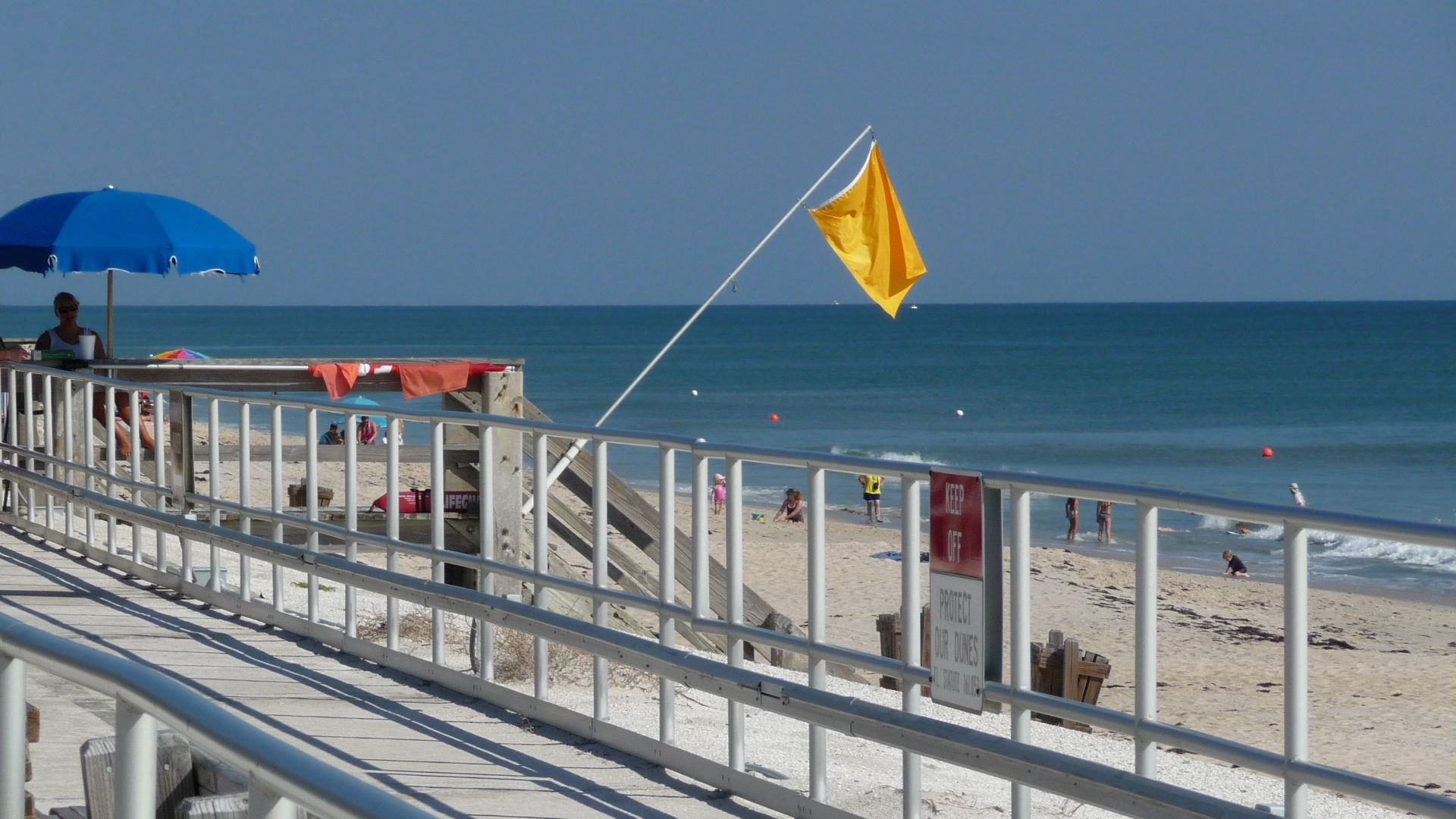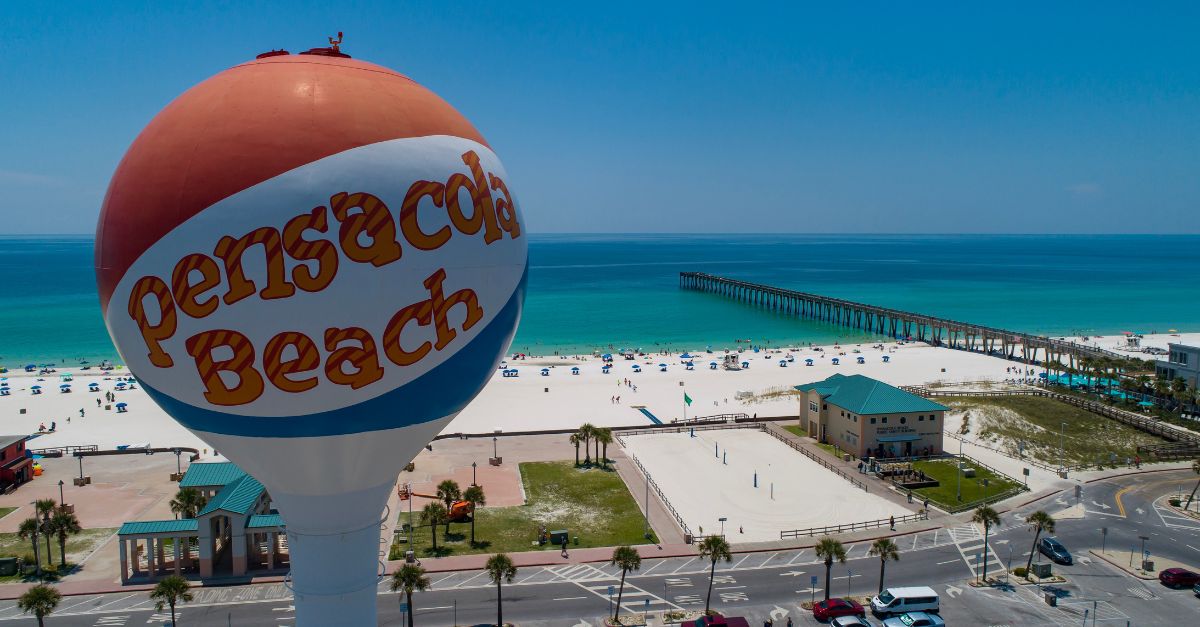A Real Paradise With Peril
What is it about Florida that makes it a paradise and a peril? Well, those turquoise waters are certainly a beach lover’s dream. But beneath the beauty lurk hidden dangers that only a few realize.

12. Fort Lauderdale Beach
Mysterious tar balls washed ashore on South Florida beaches in early 2025, including Fort Lauderdale. This led to temporary closures. The US Coast Guard investigated but couldn't determine the source, highlighting the unpredictability of beach conditions.
 Daniel Dudek, Wikimedia Commons
Daniel Dudek, Wikimedia Commons
12. Fort Lauderdale Beach (Cont.)
Between December 2019 and February 2020, Fort Lauderdale experienced massive sewage spills that released over 230 million gallons of untreated sewage into coastal waters. This incident underscored the city's aging infrastructure and the potential health risks linked with water contamination.
 Daniel Dudek, Wikimedia Commons
Daniel Dudek, Wikimedia Commons
11. Vero Beach
Vero Beach ranks among the most dangerous US beaches. Its location on Florida's east coast makes it susceptible to hurricanes. This increases the risk for visitors during storm seasons. Shark bite incidents have also occurred here.
 Rockerchi379, Wikimedia Commons
Rockerchi379, Wikimedia Commons
11. Vero Beach (Cont.)
Rip currents are prevalent here and pose dangers to swimmers. It's important to heed local advisories and avoid the water during hazardous conditions to ensure safety. Consulting the Florida Healthy Beaches Program for water quality updates is recommended before entering the water.
10. Miramar Beach
Miramar Beach is ranked #10 on Simmrin Law’s danger list, with seven surf-related fatalities in 2024, mostly near sudden drop-offs. For daily flag updates, text “SAFETY” to 31279—keep in mind that double red flags indicate swimming is prohibited and could result in a fine.
 Skye Marthaler, Wikimedia Commons
Skye Marthaler, Wikimedia Commons
10. Miramar Beach (Cont.)
While no shark attacks have been reported here, one should not float alone in deep troughs between sandbars. Additionally, strong longshore currents have been reported in the area, which can pull swimmers parallel to the shore and make exiting the water difficult.
 Dallas Epperson, Wikimedia Commons
Dallas Epperson, Wikimedia Commons
9. Haulover Beach
Haulover Beach has experienced multiple shark attacks over the years, with incidents involving species like bull and blacktip sharks. Swimmers and surfers should be cautious, especially near fishing areas. This is because bait can attract sharks. While attacks are rare, staying alert and avoiding dusk swims is advisable.
 Haulover Beach - Miami Beach, Florida | Walking Tour by TripVolution
Haulover Beach - Miami Beach, Florida | Walking Tour by TripVolution
9. Haulover Beach (Cont.)
Strong rip currents at Haulover Beach pose a major threat, as they lead to frequent lifeguard rescues and occasional fatalities. Swimmers unaware of these currents can be pulled far offshore, which makes escaping difficult. Always check beach flags before entering the water, and if caught, swim parallel to shore.
 Haulover Beach - Miami Beach, Florida | Walking Tour by TripVolution
Haulover Beach - Miami Beach, Florida | Walking Tour by TripVolution
8. Melbourne Beach
This is another beautiful beach where caution is key. The “Shark Pit” surfing zone near Spessard Holland Park has recorded 19 shark attacks, most occurring at dusk. To stay safe, one should wear water shoes and avoid seaweed piles, as they often conceal jellyfish.
 Leonard J. DeFrancisci, Wikimedia Commons
Leonard J. DeFrancisci, Wikimedia Commons
8. Melbourne Beach (Cont.)
The 20-foot rock shelf at Sebastian Inlet State Park can create hazardous wave rebounds. Swimming at guarded Hobbs Beach is a good idea for a safer experience. Moreover, it’s important to know that rip currents are a significant hazard at Sebastian Inlet State Park.
7. Indialantic Beach
Indialantic Beach is generally safer than most on this list, but it’s still important to stay cautious. The Boardwalk area, with its six lifeguard towers, is one of the safest spots for swimming. However, it’s best to avoid unsupervised areas near Paradise Beach Park.
 Indialantic, Florida - Indialantic Ocean Beach (4K) by Jersey Drone
Indialantic, Florida - Indialantic Ocean Beach (4K) by Jersey Drone
7. Indialantic Beach (Cont.)
Similar to Miami Beach, bacterial contamination often rises after storms, particularly around floating debris near Indialantic Beach. It is a good idea to check tide charts before heading out—low tide exposes sharp oyster beds near Coconut Point, while high tide can make rip currents stronger.
 Indialantic, Florida - Indialantic Ocean Beach (4K) by Jersey Drone
Indialantic, Florida - Indialantic Ocean Beach (4K) by Jersey Drone
6. Ormond Beach
The Granada Boulevard approach at Ormond Beach is great for surfing. However, you should be aware that shark attacks have been recorded here. Also, coastal erosion near Rockefeller Gardens has affected the shoreline, which leads to concerns about beach conditions.
6. Ormond Beach (Cont.)
To ensure safety, it's advisable to stay within 50 feet offshore and avoid wading alone if you're not a strong swimmer. Summer storms can bring lightning strikes, too. As a precaution, leave the beach if thunder occurs within 30 seconds of a lightning flash.
5. Miami Beach
Miami Beach's main hazards are environmental. During summer heatwaves, temperatures can soar above 95°F. On extreme heat days, you can cool off for free at Miami Beach Regional Library or designated parking garages. An important warning: If you see purple flags flying, it means Portuguese man-o-war has washed ashore.
5. Miami Beach (Cont.)
Avoid swimming during these times, and if stung, seek help from lifeguards immediately for vinegar first aid. Moreover, always swim near a lifeguard and pay attention to posted warnings. Be cautious of jellyfish stings as well because increased jellyfish activity has been reported during certain seasons.
4. Cocoa Beach
Cocoa Beach’s “Surf District” near Sheppard Park experiences varying surf conditions, so it’s safer to stick to guarded areas like Lori Wilson Park. Before heading into the water, check the Florida Healthy Beaches Program website to avoid locations that have failed water quality tests.
4. Cocoa Beach (Cont.)
It’s best to avoid swimming after heavy rainfall, as runoff can lead to high bacterial contamination. While shark attacks are rare, incidents have occurred near the Cocoa Beach Pier. This includes an unfortunate event that involves a 12-year-old girl in 2023. Staying alert is always a good idea.
3. Daytona Beach
If you're visiting, be aware that Daytona Beach has a higher-than-average crime rate. In 2022, the violent crime rate was 9.72 per 1,000 residents. This is significantly higher than the national median of 4. It's advisable to stay in well-populated and well-lit areas, especially after dark.
3. Daytona Beach (Cont.)
During summer (May–October), shark activity increases as blacktip sharks migrate closer to shore. While attacks are rare, swimmers should stay alert, especially near sandbars. Additionally, vehicles are permitted on certain beach areas. So, always be mindful of your surroundings to ensure a safe and enjoyable visit.
2. Panama City Beach
Ignoring red flag warnings here isn’t just risky—it can also result in a $500 fine if you attempt to swim in high-risk areas like Russell-Fields Pier when they’re posted. To avoid sewage runoff contamination, wait at least 72 hours after heavy rainfall before swimming near spots like MB Miller Pier.
 j.s. clark/ "Image by jsclark.net.", Wikimedia Commons
j.s. clark/ "Image by jsclark.net.", Wikimedia Commons
2. Panama City Beach (Cont.)
Moreover, Panama City Beach has experienced multiple drownings in recent years, often due to hazardous rip currents. These currents are powerful channels of water that can quickly pull swimmers away from shore. In June 2024, three swimmers tragically lost their lives despite rescue efforts.
 Bart Everson, Wikimedia Commons
Bart Everson, Wikimedia Commons
1. New Smyrna Beach
This area holds the title of the "shark attack capital of the world," with over 300 recorded encounters since the 1880s. Since 2010, there have been 32 attacks here. This makes it the top US beach with incidents of shark bites.
1. New Smyrna Beach (Cont.)
Blacktip sharks frequently patrol the shallows near the inlet. So, it's best to avoid swimming near fishermen or surfers, as bait and splashing can attract them. Red flags are posted more than 200 days a year. For real-time surf conditions, download the Volusia Beaches app for hourly updates.














